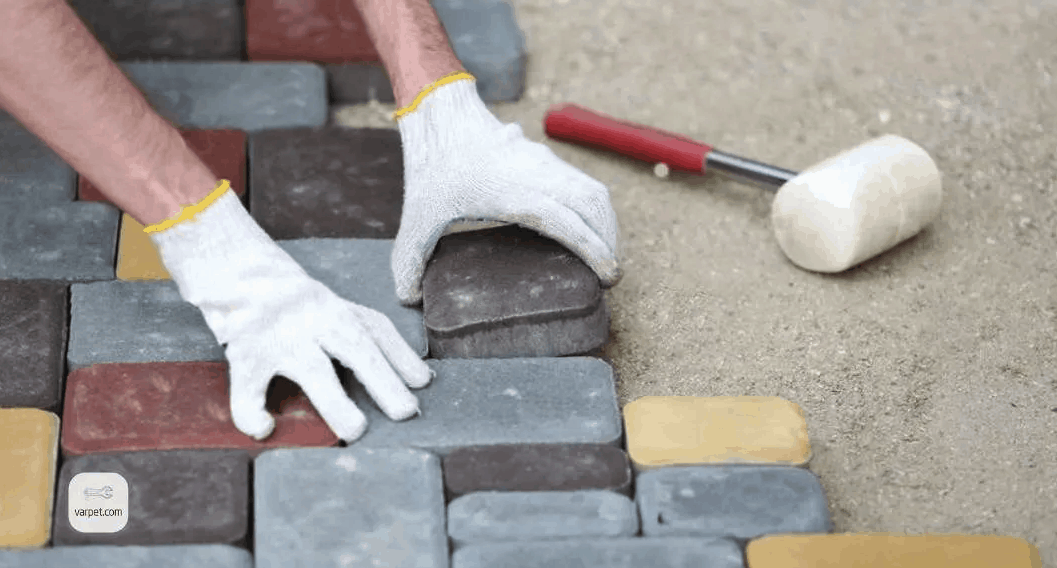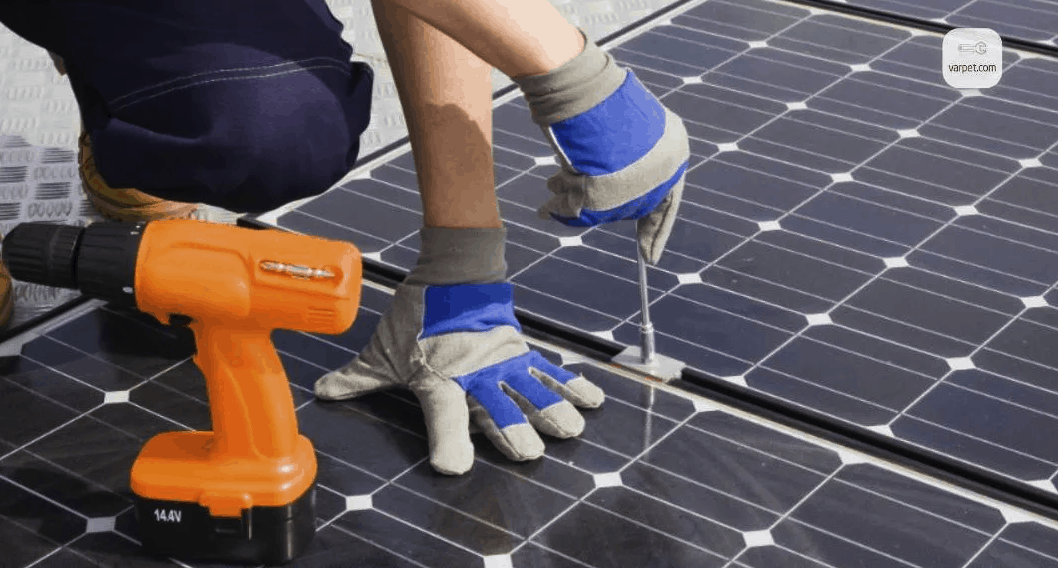In this article we will learn the specificity of such a procedure as laying paving slabs on a concrete base: we will consider the advantages and disadvantages of this technology, a detailed scheme for its implementation and get acquainted with the main recommendations for laying paving slabs using “Brick”, “Old city” and “Rhombus”.
A popular and attractive type of paving slabs “Old Town”
Laying paving slabs on a concrete base
The owners of country houses and cottages are interested in the procedure for laying paving slabs with their own hands, trying to equip and ennoble their personal plot. Tile coating is popular especially in urban environments.
As indisputable evidence of such popularity are not only eloquent photos of examples of paving slabs that can be seen in internet, but also real solutions found on the streets of any city.

The area in front of the private house is paved with “Brick”.
Paving slabs are used to cover:
- around shops, pharmacies, office and administrative buildings;
- on paths leading through the lawn;
- in park areas;
- at car parking lots;
- in places for storage of large equipment;
- on the city squares and other sites.
Attention! For parking cars, the thickness of paving slabs is selected taking into account the weight loads. Do not use pedestrian walkway material for parking. Such a coating will quickly deteriorate.

Tiles are perfect for covering urban paths, as well as for paving in the country.
Paving slabs on concrete: is it possible to lay the coating on a concrete base?
Most people think that the installation of the tile is carried out exclusively on a sandy surface, so the appropriateness of the technology of laying paving slabs on a concrete base by many of them seems doubtful.
Concrete surface is considered the most reliable basis for the formation of paths and platforms of pavers. This is because concrete prevents the movement of tiles on the surface and is characterized by high resistance to high loads. In some cases, if there is a violation of the technology of laying concrete paving slabs, the result may be the opposite. Therefore, all requirements and recommendations regarding the construction of such a coating must be strictly observed.
The technology of laying paving slabs on the concrete pavement is interesting for both owners of suburban cottages and city residents who have their own store or any other type of business. The blind area itself has many advantages, and in combination with a tiled coating you can get a really optimal solution. Due to the slope of the blind area, water will not accumulate on the surface of the tile.
Laying paving slabs for paths yourself on the blind area
The blind area is considered an independent structure, which is formed around the building in order to protect it. It may be completely devoid of coverage. It is recommended to lay tiled elements on top of it, but this is not necessary.

Creating a concrete blind area around the house
Advice! To make the exterior of the garden plot spectacular and harmonious, you can use the same type of tile coating for the arrangement of paths and blind areas. On the Internet you can find photos of the options for laying paving slabs “Brick” on the blind area around the house and in the yard.
Despite the fact that the finish of the blind area is not mandatory, it is still worth it, since the concrete surface looks unattractive and can ruin the appearance of the house and yard. Therefore, it is worth investing in the purchase of material and call specialists or perform the procedure yourself.
Prices for laying paving slabs on a concrete base (specialist services):
Type of work Price, AMD / m²
Topcoat removal (asphalt, concrete, etc.) 1100-4400
Concrete base works
Dry mix 1100
Tile surface laying 2200
Concrete site preparation with reinforcement
Sand 100
Concrete 2300
Reinforcing elements 1300
The cost of specialists 3000
Preparing a regular concrete site
Sand 100
Concrete (layer thickness 14 cm) 2300
The cost of specialists 3000
Installation of borders
Concrete 500
Sand 100
The cost of specialists 550
Installation of drainage systems
Concrete 400
Sand 100
The cost of specialists 500
You can learn more about the prices of specialist work from the Varpet application (installation link), which will help you call a specialist at your location at a convenient time for you. And all the necessary materials can be found in the network of stores “Nor Tun”.
The advantages of laying paving slabs on concrete
Advantages of working with concrete surfaces:
- Simple installation system – for the formation of asphalt pavements, you will definitely need to hire special equipment when laying paving slabs on concrete is much easier and faster and you can do it yourself.
- It turns out a strong, reliable and durable base. Now the market is able to offer special varieties of tile elements, which ensure the absence of a sliding effect on the coating even when heavy precipitation occurs.
- The coating remains stable even under the influence of sudden temperature changes. It is resistant to various types of mechanical damage. The manufacturing company gives consumers long warranty periods for the use of decorative materials. They depend on the type of tile coating and can be in the range of 10-40 years.
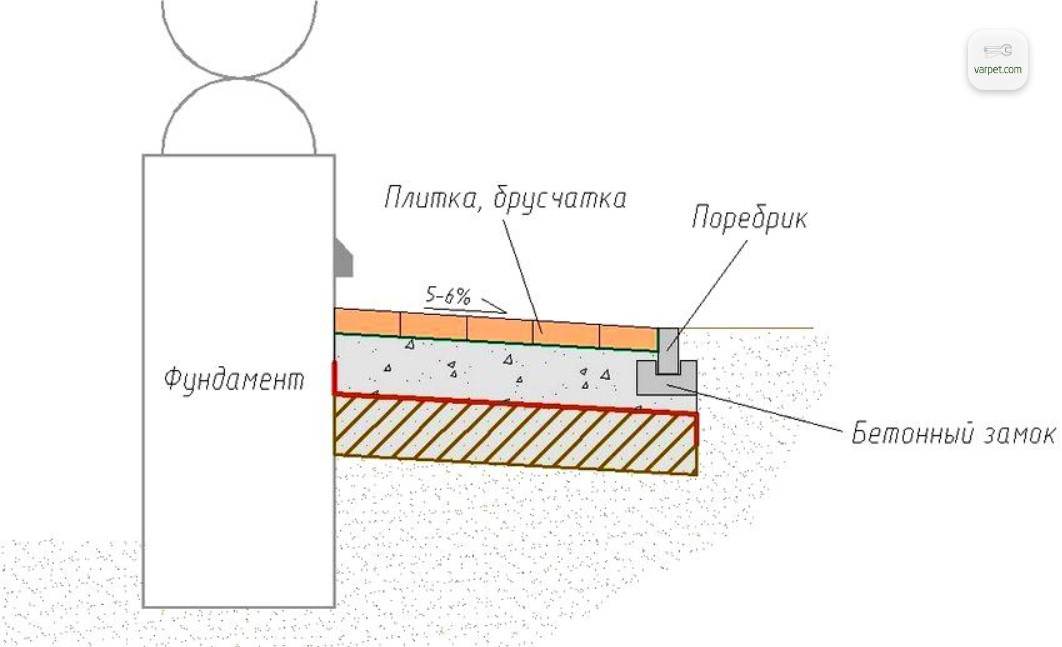
Scheme of concrete paving
Attention! In winter, the structure is not subjected to severe icing, since excess moisture enters the soil through the seams and is absorbed.
With a wide selection of materials, design possibilities are expanding. Existing schemes of laying paving slabs “Old City” are able to offer several unusual design options.
In addition to this material, there are other ones that differ:
- size
- form;
- quality;
- coloring;
- characteristics and properties.

The process of laying pavens on the site in front of the house
Tile coating is easy to repair. In this case, it is not necessary to completely replace the entire sidewalk, it is enough to replace only damaged elements. In addition, experts recommend purchasing material with a margin.
Description of paving slab laying technology
There are many options for laying paving slabs on concrete foundations. The blind area does not put forward special requirements for the choice of finishes, so quality and your personal taste are the determining factor. It is even possible to lay paving slabs on an old concrete base.
The process of forming the blind area begins with the marking. To complete this step, you will need a marking cord, as well as a set of wooden pegs. They are placed around the house in accordance with the measurements, after which a cord is drawn through each of them. The quality of the blind area depends on how carefully and accurately the marking is done.
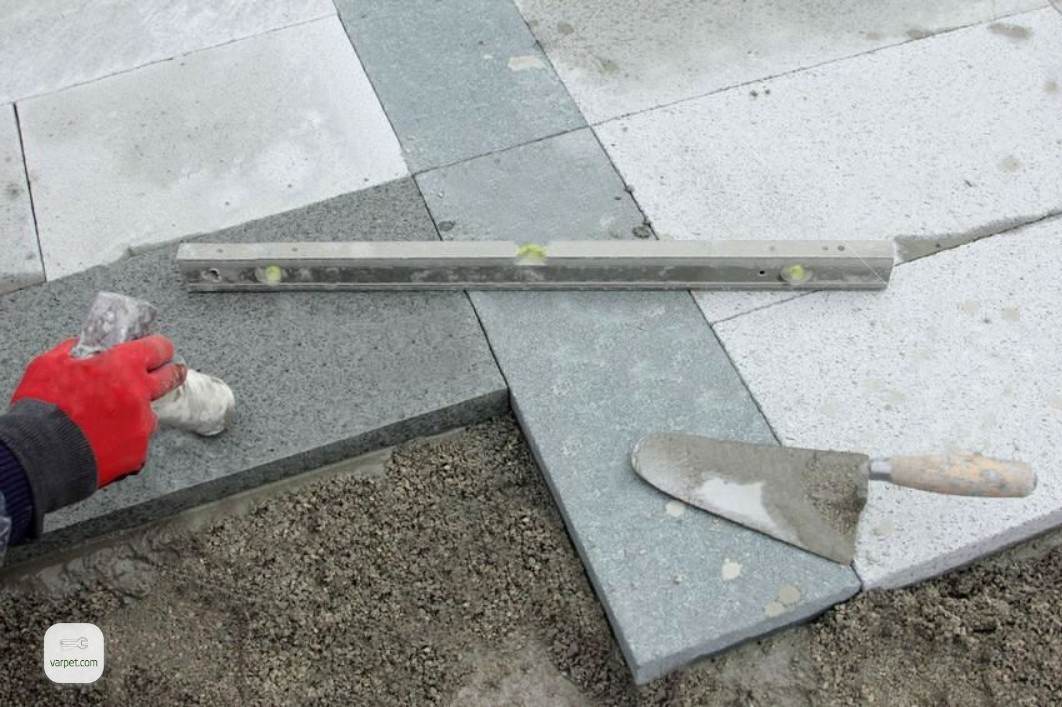
Laying paving slabs on a sand-concrete mixture
Attention! Recreating the pattern of laying paving slabs on the blind area, you need to remember about the slope. Most often, this indicator ranges from 1-3 ° / m. There are also exceptions to the rules when the slope angle is 5 ° / m.
After the marking is completed, the top soil layer is excavated in the work area. Most types of laying paving slabs involve the installation of a cover 40 cm wide. With this in mind, the depth of excavation of the upper soil layer is determined. In addition, the concrete blind area should rise above ground level.
The requirements of the slope, which is formed for the drainage system, are also added to them.
Installation of the curb – part of the laying of paving slabs on the mortar
Even if you are working with one of the simplest options for laying paving slabs “Brick”, the photo as a basis does not provide a high-quality result. It is very important to comply with all the requirements of sidewalk paving technology and the formation of the blind area.
The blind area construction is quite difficult. At this stage, experts recommend installing borders, which will simplify the work. This is due to the fact that the pattern of paving slabs is repelled from the curb, which limits it. At this stage, it will perform another function – the frame.
If you refuse to install the curb, you still have to install it later, and the blind area will be complicated by the need to install the formwork structure.
The pit under the curb should go deeper than the level of masonry. Its bottom falls 30 cm from the lower border of the curb.

The track is covered with paving stones of different sizes.
Advice! It is necessary to include outflow of water in these calculations, since the border should not impede the outflow of water, which can violate the integrity of the building foundation.
After that, a crushed stone pillow with a thickness of 15 cm is formed at the bottom of the pit, the material should be carefully tamped. 2 cm thick concrete mortar is poured on top and a border is being installed. It will take several days to fully set and solidify. After making sure that the fill is completely dry, you can continue to work.
Formation of the basis for laying paving slabs
After installing the curb, the site is leveled and carefully tamped with the desired surface slope. It is recommended that several layers of geotextiles be laid at the bottom. This material will prevent the growth of plants. Despite the fact that the vegetation is not able to penetrate the concrete base, geotextiles will provide additional protection.

Layout of the base for paving slabs or paving stones
In some cases, bitumen material is used as a bottom lining. The laying of this material is carried out in order to increase the waterproofing properties of the coating.
The scheme of formation of the concrete base:
- The layer is formed of crushed stone. If you installed curbs, this step can be omitted.
- If serious coating loads are expected, it is necessary to equip the blind area with a reinforcing layer. It can be made from reinforcing bars.
- For a monolithic structure, a height of 10 cm is sufficient for a pedestrian walkway. The base for car parking should have a height of at least 20 cm.
Advice! To obtain a high-quality result, you need to use concrete marking M200. It is optimal with quality and value.
Paving slabs: how to put a finishing coating on a mortar
If we compare the laying patterns of paving slabs, this technology is in many ways similar to the technique of working with tiles. A distinctive feature here is a solution having a slightly different composition and consistency.
In the photo of paving slabs, the drawings for laying the coating elements are very diverse. The specificity of the design does not affect the installation of sidewalks, as well as the general technology. There are two methods to perform tile laying: sand-cement mixture and sand-cement mortar.
In the case of a sand-cement mixture, a thicker consistency of the solution is obtained than that used in the construction of the base. The mixture does not tolerate the presence of small pebbles, so sand must first be sieved. This will simplify the work on self-paving paving. The required thickness of the applied layer is 2-3 cm, after which the mixture is leveled with a trowel.
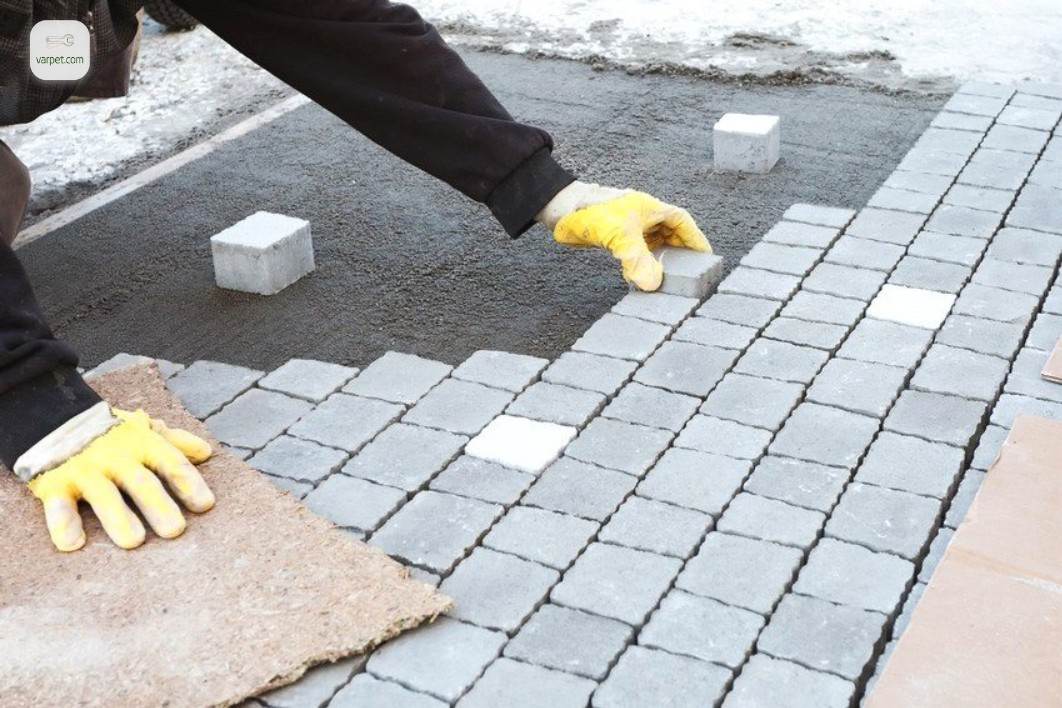
There are two ways of laying tiles: using a sand-cement mixture and a sand-cement mortar
When using the dry method, there is a possibility of shrinkage of paving slabs. On which solution the specialists put the coating, in this case it no longer matters much, since this will require special knowledge. The prices of a specialized mixture are quite high, so it is better not to risk it and give preference to a cement-sand mixture.
In the second case, a cement-sand mortar in a ratio of 3:1, respectively, can be used. After the solution is prepared, it must be laid out on the base, leveled and tamped.
Advice! To pave the cobblestones, you need to use a wooden or rubber mallet. She is unable to damage the tiles.
After all the coating elements are laid out, the surface is abundantly wetted with water. Over a period of time, the tile dries, then the seams between the elements of the sidewalk are filled. To wash residual cement and dirt, the coating must be washed again with water.
Laying options for paving slabs “Old Town”
Type of paving slabs “Old Town” in comparison with others is the most common. Such popularity is determined by a large list of advantages that this material brings.
Tiles “Old City” allows you to create interesting patterns and combinations of coating elements. One package of this material may contain parts in four different sizes. Sometimes there is a choice of three dimensional combinations in a pack.
Full package includes:
- large tile;
- square tile;
- an element that is 1/2 of the size of a large tile;
- an element comprising 1/3 of a large tile or 1/2 of a square.

There are many interesting patterns of paving tiles “Old City”, which will create a unique design of the site
With such a dimensional variety of options for laying paving slabs, “Old Town” is enough. Schemes can be complicated by adding several colors.
On the other hand, the presence of such a large scale in size can cause chaos and disorder. If you do not adhere to a certain regularity in your work, you can get a not too beautiful coating.
Advice! To some extent, a little randomness may even be welcome. The main thing is to avoid the formation of spots, consisting of clusters of tile elements in the same size or the same color.
If you want to simplify the work as much as possible, it is enough to limit yourself to the pattern of laying paving slabs of two colors, which is attractive in its own way. You can rely on a professional wizard to do all the work, whom you can call using the Varpet application. The wizard will perform work, starting with the layout of the sidewalk and the construction of the concrete base to the final laying of the tiles.

An example of a combination of tiles of various types and different colors
Features of laying paving slabs “Brick”, “Rhombus” and other forms
At first it may seem that drawing up patterns from paving slabs is a rather difficult task. But after watching the video, laying paving slabs ceases to seem difficult. Using the recommendations regarding the selection of schemes, you can easily find your way around.
If you have chosen the “Brick” form for your sidewalk, you should pay attention to the following schemes:
- styling of a linear type, which can be complicated by a shift or do without it at all;
- modular laying;
- paving in a spiral.
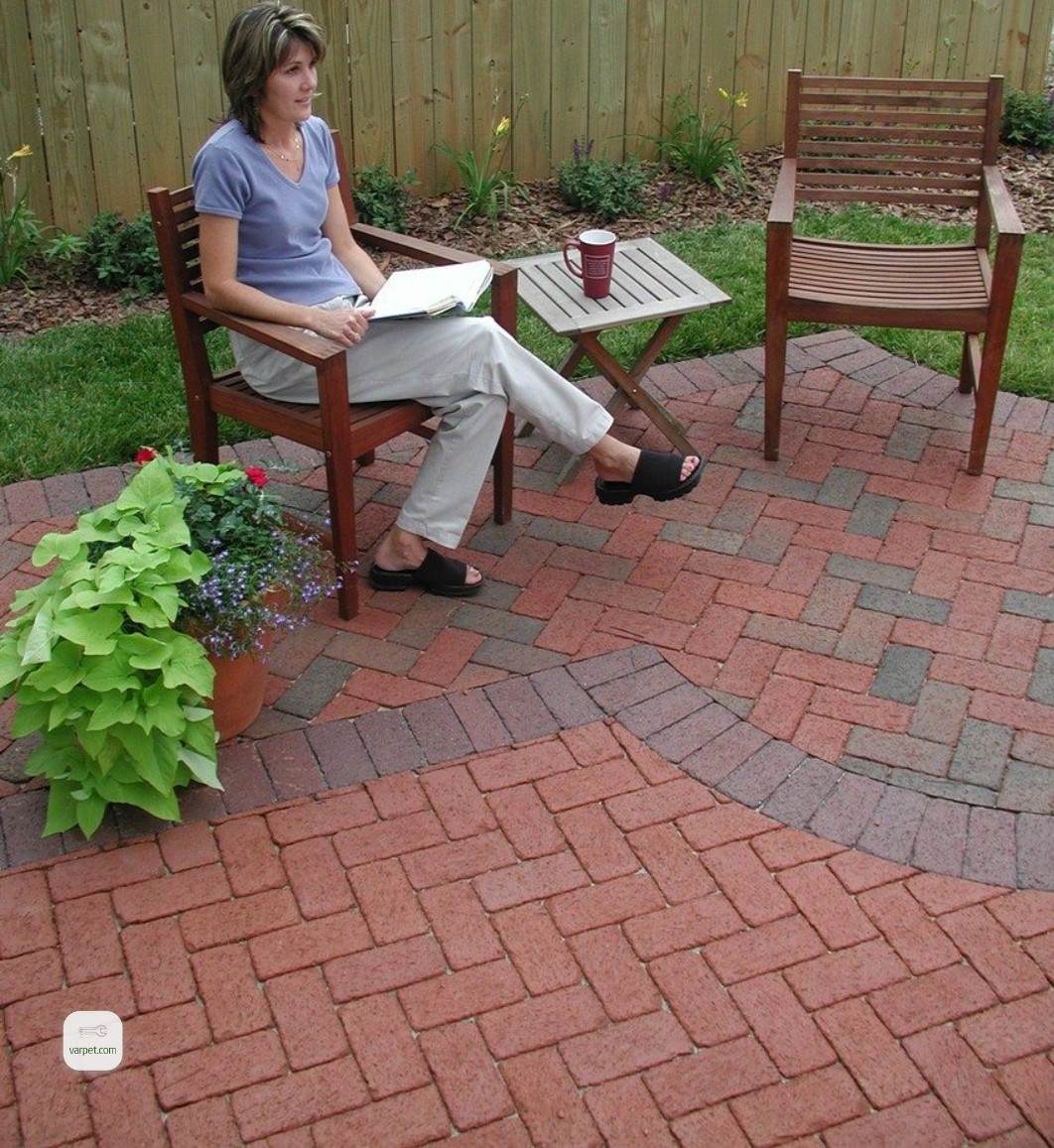
Brick laying tile schemes are some of the simplest
Thanks to the rounded edges, such a tile perfectly shows its decorative effect in all of the above patterns.
In the photo of the paving slabs “Rhombus” the options for laying the pavement look almost like a 3D image. As a result of such paving, a stunning optical illusion arises, creating the impression of a volumetric effect on the surface of the sidewalk.
This effect is explained on the photo of paving slabs “Rhombus” laying, based on the use of elements with different external characteristics:
- form;
- surface texture;
- coloring.
In total, there are now more than 40 varieties of tiled products with similar geometric data.
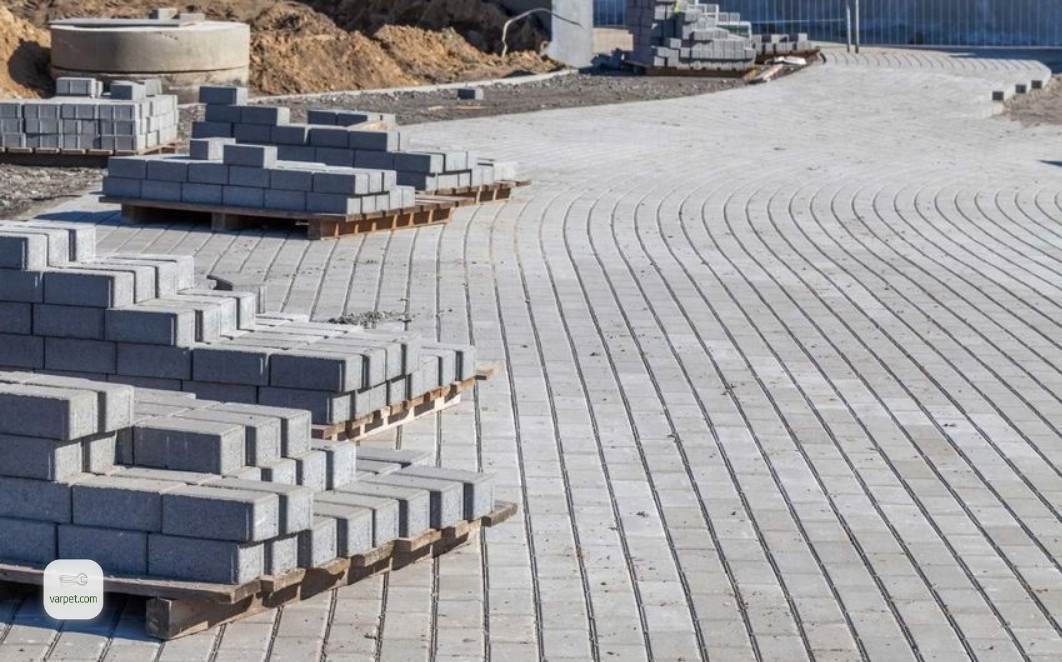
Laying pavers on a concrete foundation in the city
Especially popular is polymer sand tile. The material is able to offer excellent technical characteristics and is suitable for those consumers who want to expedite the installation. Products are based on sand, polymers and dyes and may include elements of completely different configurations.
Most modern tile coatings perfectly tolerate the influence of the sun and low temperatures, are distinguished by their durability and increased strength, as well as other valuable performance characteristics. Consumers only have to choose the design and color in which the coating will be made.

